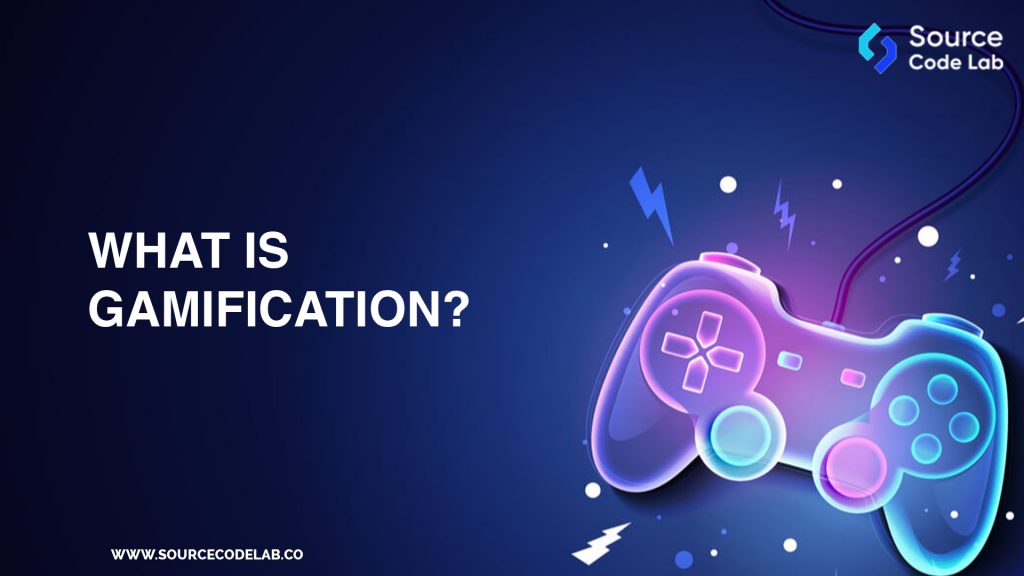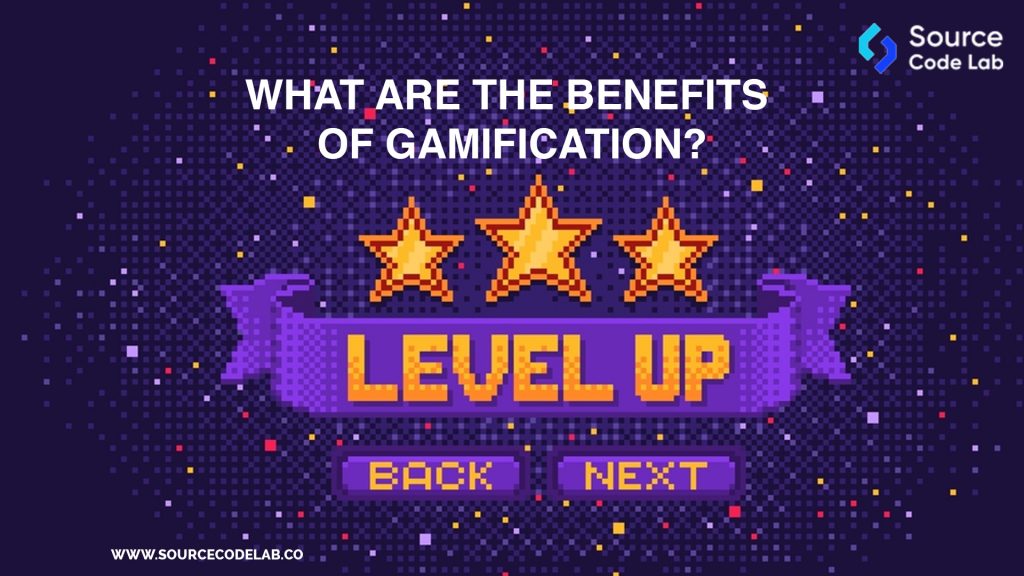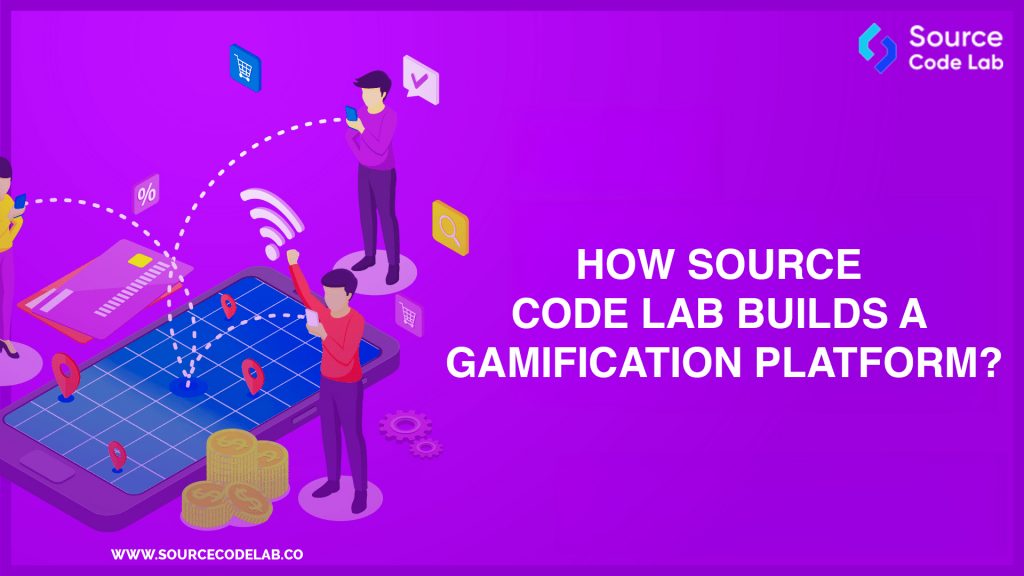Summary
Gamification is more than just a buzzword; it’s an effective method for increasing employee motivation, engagement, and performance. To achieve outstanding results, you must first grasp what gamification is, why it works, and how to design a sustainable program.Instead of focusing exclusively on how a product works, gamification solutions make the user experience more interesting. Gamification in education keeps pupils motivated and helps them remember what they’ve learned. It also encourages staff to finish tedious duties or training.Gamification is also used in marketing to connect with customers and build their loyalty.So, what exactly is gamification in UX design? We’ll explore this topic and provide gamification examples to show how it can enhance user experience and create a standout product.
What is Gamification?

Gamification incorporates exciting game aspects into regular activities to make them more engaging and inspiring. Gamification, which uses badges, leaderboards, points, and prizes, makes tasks more pleasurable and encourages participation.It is utilized in a variety of fields, including education, marketing, training, health, and customer service. For example, learning apps utilize gamification to make studying more enjoyable, whereas businesses use it to boost employee performance, increase customer loyalty, and reward both employees and customers.To be effective, gamification must be tailored to the audience’s interests, motivations, and the context in which it is utilized
What is Gamification Platform Development?
Gamification platform development isn’t about creating an entirely new system. Instead, it involves adding gamification features to your existing app and business processes. There’s no need to overhaul your entire product; gamification elements can be seamlessly integrated without changing the core structure.Gamification frameworks aim to boost human motivation and user engagement. Building a gamification platform involves a series of steps to add game-like features to your app, tailored to your business needs. This helps you reach your goals faster. A Game Development Company can help guide you through this process to make sure your gamification strategy fits your goals.
Global Gamification Market
The global gamification market was valued at USD 10 billion in 2022 and is projected to exceed USD 116.68 billion by 2032, growing at a compound annual growth rate (CAGR) of 27.9% from 2023 to 2032.
Gamification Market Key Takeaways:
- The North American gamification market was valued at USD 3.8 billion in 2022.
- The retail industry accounted for 28.5% of the market revenue in 2022.
- The solution component segment is predicted to increase at a CAGR of 21.5% between 2023 and 2032.
Also Read (Benefits of Custom Game Development)
Essential Components of Gamification
Games are engaging activities driven by rules, goals, and achievements. They tap into intrinsic motivation, giving players a sense of purpose.You’ve likely seen gamification in action in financial apps, digital banking systems, medical apps, and language-learning tools. Here’s a look at the key principles of gamification design:
Goals
Every game needs clear, overarching goals. Understanding the purpose of a task helps users feel accomplished when they achieve these goals, adding to their enjoyment.
Rules
Game rules should be basic and easy to follow. Starbucks, for example, provides a loyalty program that allows users to earn points for purchases and redeem them for incentives. In UX design, rules govern user interactions and experiences.
Feedback
Feedback helps users track their progress and understand how to improve. This can be shown through progress bars, new levels, encouragement messages, or animations.
Rewards
Players can earn rewards for their time and work in the game. These can include virtual badges, points, trophies, leaderboards, and even monetary prizes.
Motivation
Engagement is fueled by both inner and external motivation. Intrinsic motivation stems from curiosity or a sense of accomplishment, whereas extrinsic motivation is fueled by tangible incentives such as money or acclaim. Intrinsic motivation is especially powerful in mobile apps that promote user engagement. A Dedicated Game Developer may create experiences that leverage these motivators.
Freedom of Choice
Users enjoy systems where they can voluntarily participate and make choices to reach their goals, rather than feeling forced into participation.
Freedom to Fail
The potential for failure adds excitement to the game. Users should be free to fail without fear of negative consequences, which keeps them interested and motivates them to try again.
What Are the Benefits of Gamification?

Gamification provides several key benefits across different areas:
Increased Engagement
Gamification makes tasks more enjoyable, interactive, and rewarding, which boosts active user engagement. It’s particularly effective in increasing customer interaction.
Improved Learning and Retention
Gamification in education increases student engagement and information retention by making learning more interactive and immersive. Game mechanics assist students in focus and increase their capacity to recall knowledge.
Increased Brand Loyalty and Customer Satisfaction
Gamification in marketing campaigns and loyalty programs increases brand loyalty and customer happiness. Rewards, challenges, and personalized experiences contribute to a more engaging and memorable customer journey.
Social Interaction and Collaboration
Gamification promotes teamwork and social connection with features like as leaderboards, multiplayer challenges, and community forums, making it an effective tool for collaboration.
Data and Analytics
Gamification gives useful information on user behavior, preferences, and performance. This data helps optimize the user experience, personalize content, and make informed decisions.
Motivation and Behavioral Change
By offering incentives, positive feedback, and a sense of progress, gamification encourages desired behaviors. It can motivate participants, promote healthy habits, and enhance learning outcomes.
How Source Code Lab Builds a Gamification Platform?

Understanding how to build a gamification platform right from the start is crucial to minimizing the risks and reducing overheads. We have prepared an experience-based step-by-step guide you can rely on when starting with gamification software development.
Step 1: Define the Business Goals
Before diving into gamification platform development, start by defining your business goals. Ensure that your gamification strategy aligns with these objectives. Clearly understanding what problems gamification will address and why it suits your business is crucial for effective implementation.
Step 2: Conduct Business Analysis and Create an Action Plan
Gamification involves significant resources, planning, and research. Begin by analyzing the software market, studying competitors, and developing a detailed action plan. Cameron Graham from TechnologyAdvice emphasizes the importance of avoiding unnecessary waste by conducting thorough business analysis. This will help assess market conditions, evaluate risks, and refine your gamification strategy.Need assistance with business analysis? Reach out to Source Code Lab’s expert consultants for support and insights.
Step 3: Start with an MVP
Building a gamification platform from the ground up might be resource-intensive. Begin with a Minimum Viable Product (MVP) to validate your concept and guarantee it is worth the expense. An MVP enables you to test the concept with limited resources, obtain user input, and evaluate demand before committing to full-scale production.
Benefits of starting with an MVP:
- Collect feedback from your target audience
- Test the product with real users
- Prioritize features for future development
- Build brand awareness
- Achieve an initial return on investment (ROI) if the concept proves successful
Step 4: Design Your Platform
The UI/UX design of your gamification platform is vital for creating an intuitive and engaging user experience. Effective design ensures that the gamification elements are accessible and enjoyable. Source Code Lab recommends the following design practices:
- Focus on clear and straightforward user interactions
- Minimize navigation steps within the app
- Define logical and simple user flows
- Include onboarding to guide users on how to engage with the gamification features
- Follow popular UI/UX trends to meet user expectations
- Balance simplicity with interactive elements
- Remove interface clutter to enhance user experience
Step 5: Build the Gamification Platform
To achieve high quality and long-term value, it’s crucial to build the gamification platform correctly. Once the project scope is defined, our developers commence with the gamification software development. Using detailed technical documentation and selected tech stacks, our team implements both front-end and back-end components.During front-end development, our developers turn UI designs into functional user interfaces. On the back end, we handle the server side, APIs, and business logic. Typically, we deploy a team of experienced front-end and back-end engineers to ensure dependable development.At Source Code Lab, we use best practices such as Agile project management, continuous integration and delivery (CI/CD), regular code reviews, code quality control, test-driven development, and clear communication and reporting.
Step 6: Deploy and Test
We perform continuous testing throughout the development phase to minimize rework during final testing. Once development is complete, we conduct multi-level testing to evaluate usability, performance, acceptance, and functionality. Any issues identified are addressed by our developers to refine the product.After thorough testing, we proceed with a gradual deployment to the production environment for beta testing. Feedback collected during this phase helps us make necessary adjustments and improvements.
Step 7: Gather and Analyze User Feedback
During beta testing, we collect and analyze user feedback to ensure that the gamification elements work as intended and to address any inconsistencies.
Step 8: Improve the Gamification Software
Following the final changes, we release the product to the market. After the release, Source Code Lab provides continuing help to troubleshoot, update capabilities, improve performance, and more. Keeping up with the latest gamification trends is critical for maintaining a competitive advantage. Also Read: Top 10 Game Development Companies in 2024
Use Cases and Examples of Gamification
1. Marketing and Customer Engagement
Companies like McDonald’s, Nike, and Starbucks use gamification to enhance customer interaction and loyalty. They create engaging experiences through loyalty programs, mobile apps, and interactive marketing campaigns that include game elements like points, badges, and rewards.
2. Workplace Training and Employee Engagement
Gamification helps improve workplace training and increase employee engagement. For instance, Deloitte and IBM use gamified training programs to make learning more engaging, improve information retention, and encourage collaboration among employees.
3. Health and Wellness
Health apps like Fitbit and MyFitnessPal use gamification to promote healthier lifestyles. They integrate game elements to track physical activity, set goals, and reward users for achieving milestones, making it easier for users to stay active and make better choices.
4. Education and eLearning
Gamification makes learning more interactive and enjoyable. Platforms like Duolingo and Khan Academy use game features to engage students in subjects like languages and math. They offer immediate feedback, progress tracking, and rewards to keep students motivated and focused.
5. Productivity and Task Management
Task management tools such as Asana and Trello use gamification to boost productivity and organization. By adding elements like achievements, progress bars, and leaderboards, these apps make completing tasks more enjoyable and rewarding.
6. Fundraising and Crowdsourcing
Gamification is also used in fundraising and crowdsourcing to drive participation and donations. By creating a competitive and rewarding environment, gamification encourages people to get involved, share ideas, and support causes.

Ready to Level Up Your Gamification?
UX gamification takes your user experience from good to great. As a gamification designer, your goal is to captivate and engage users, encouraging them to sign up, purchase, download, or complete other calls to action.Start by focusing on your product’s core objectives and apply relevant Core Drives to add meaning and value. Ensure you provide users with a highly enjoyable experience, as that’s the essence of gamification.Get it right, and your users will enjoy a captivating and memorable experience.At Source Code Lab, we specialize in gamification and offer expert solutions as a Custom Game Development Company. Let us help you design and implement effective gamification strategies that elevate your user experience.
FAQs:
What is a gamification platform?
A gamification platform integrates game-like elements into non-game contexts to enhance user engagement and motivation. This includes features such as points, badges, leaderboards, and challenges to make interactions more interactive and enjoyable.
How do I choose the right features for my gamification platform?
Select features based on your target audience and business objectives. Consider incorporating elements like goals, rewards, feedback, and social interaction to enhance user engagement. Ensure the features align with your overall strategy and user needs.
How can I ensure my gamification platform remains effective over time?
Continuously update and improve your gamification platform based on user feedback and industry trends. Monitor performance metrics, stay current with gamification trends, and adapt your strategies to maintain user engagement and satisfaction.
How do I measure the success of my gamification platform?
Track key performance indicators (KPIs) such as user engagement rates, completion of gamified tasks, user satisfaction, and ROI. Analyzing these metrics helps assess the effectiveness of your gamification strategy and make data-driven improvements.


